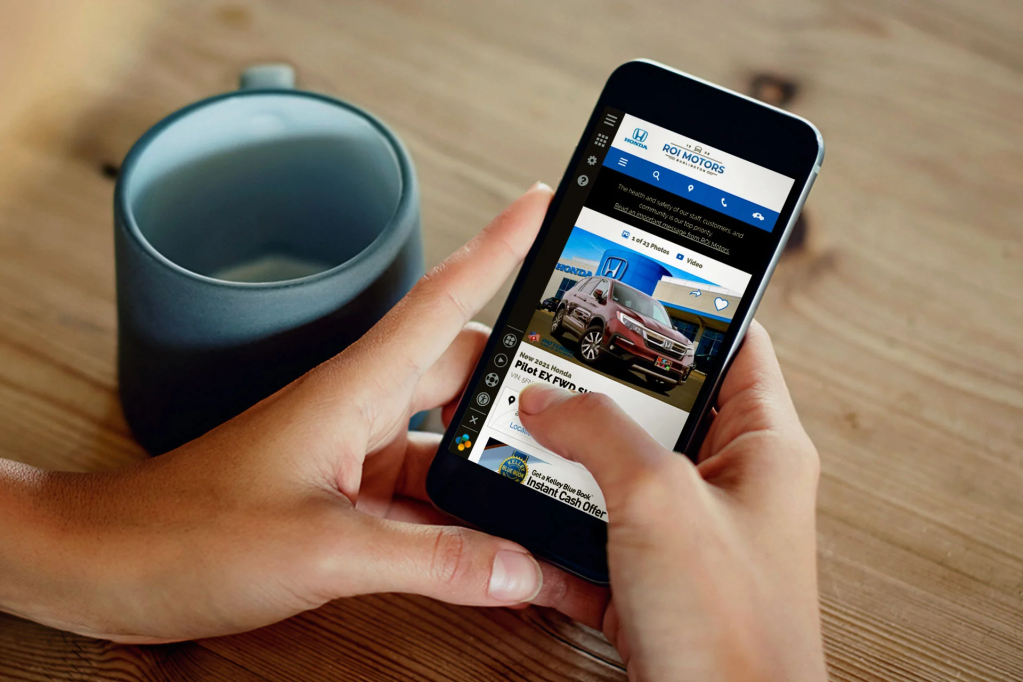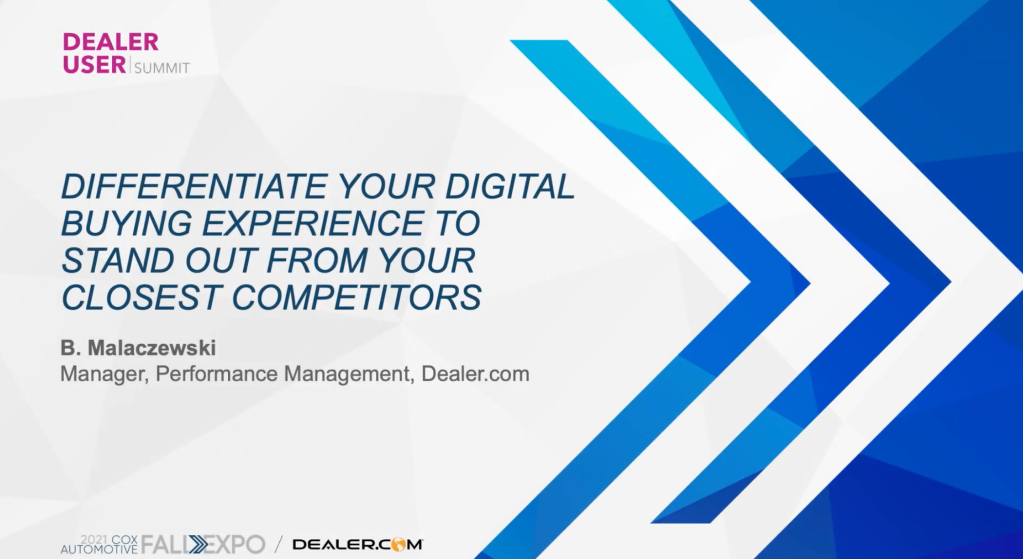
Having a mobile-friendly website is one that correctly displays on mobile and handheld devices. This makes for a streamlined experience for your dealership staff and online car shoppers when viewing your website. According to Google, w hen web users visited a mobile-friendly site, 74% of people say they’re more likely to return to that site in the future.*
And as the automotive industry moves toward a more digital-first environment, many car shoppers use the internet to shop for cars, so you must make the experience as easy as possible.
Today, many businesses want their website to be fully responsive because it’s essential to have a mobile version of a website. This means the design and development of your website responds positively to the car shopper’s screen size, platform, and orientation.
But at Dealer.com, we use the latest, advanced, mobile-first technology to deliver a user-focused, search-engine-optimized experience when car shoppers visit your site with any device. We mobilize and optimize your site for any smart device.
But you might wonder what’s the difference between a fully responsive website and a mobile-first website.
A Fully Responsive Website
Today, almost everyone has a fully responsive website, meaning the browser will rescale itself to keep the user experience and look and feel across all devices — with no irritating zooming, scrolling, or resizing. Fully responsive websites are also the easiest to implement and maintain and to build a mobile experience at scale. But having a fully responsive website without having a mobile-first strategy does not fully optimize the user experience.
A responsive site only takes the desktop site and makes it mobile friendly. While it can be an adequate mobile platform, it doesn’t optimize for the best mobile experience like a hybrid platform. It also doesn’t account for behavioral differences going from a desktop to mobile device. Just because a desktop site can respond to a device and scale down, doesn’t mean the shopper wants to use a scaled down desktop site.
Additionally, responsive websites are likely to load slower on mobile devices with customized CSS (Cascading Style Sheets) because it loads the website in its entirety. Ideally, users want a mobile experience on mobile device which would require the web-developer to write additional CSS to hide/add elements to the responsive website causing search engines to crawl more code.
Dealer.com takes today’s web site experience a step further and uses a mobile-first approach that allows us to optimize every mobile experience so dealers can render a specific experience to any device.
Why Mobile-First?
Mobile devices are at the forefront of the digital revolution that has taken place in the last decade. According to Dealer.com, 62% of traffic to dealership websites comes from personal devices. That’s why it’s so essential to ensure the mobile experience for your website is uniquely optimized for each user.
We also know that as dealers, many of your sales and service staff use personal and handle-held devices to interact with customers daily.
Google announced that a website’s mobile friendliness would be a new ranking signal for grading websites. So, the more your website can adapt seamlessly from desktop to a specific personal or handheld device, the higher your website is ranked.
Mobile-first technology from Dealer.com works to deliver a superior user experience across every device while controlling each experience from an intuitive dashboard. This allows you to configure every aspect of your website, simplify site updates across devices, merchandise inventory with precision, and deliver digital deals through transparent automotive digital retailing.
Adapted to Every Car Shopper
We’re committed to using responsive technology to build mobile-first, adaptive websites for our clients— the industry’s most flexible website response capabilities. Our technology incorporates the essential parts of a fully responsive website with the ability for device-specific experiences, we are not just responsive or only responsive.
By optimizing each shopper’s experience for device-specific content and configuration, we give dealers more flexibility and customization opportunities than other providers. So, no matter if you’re shopping on an iPad Pro or Galaxy S22, we create a website specifically for each device.
At Dealer.com we believe that designing with a mobile-first mindset ensures every car shopper has the unique experience they deserve.
[elementor-template id=”58044″]
* Google Search Central Blog



















